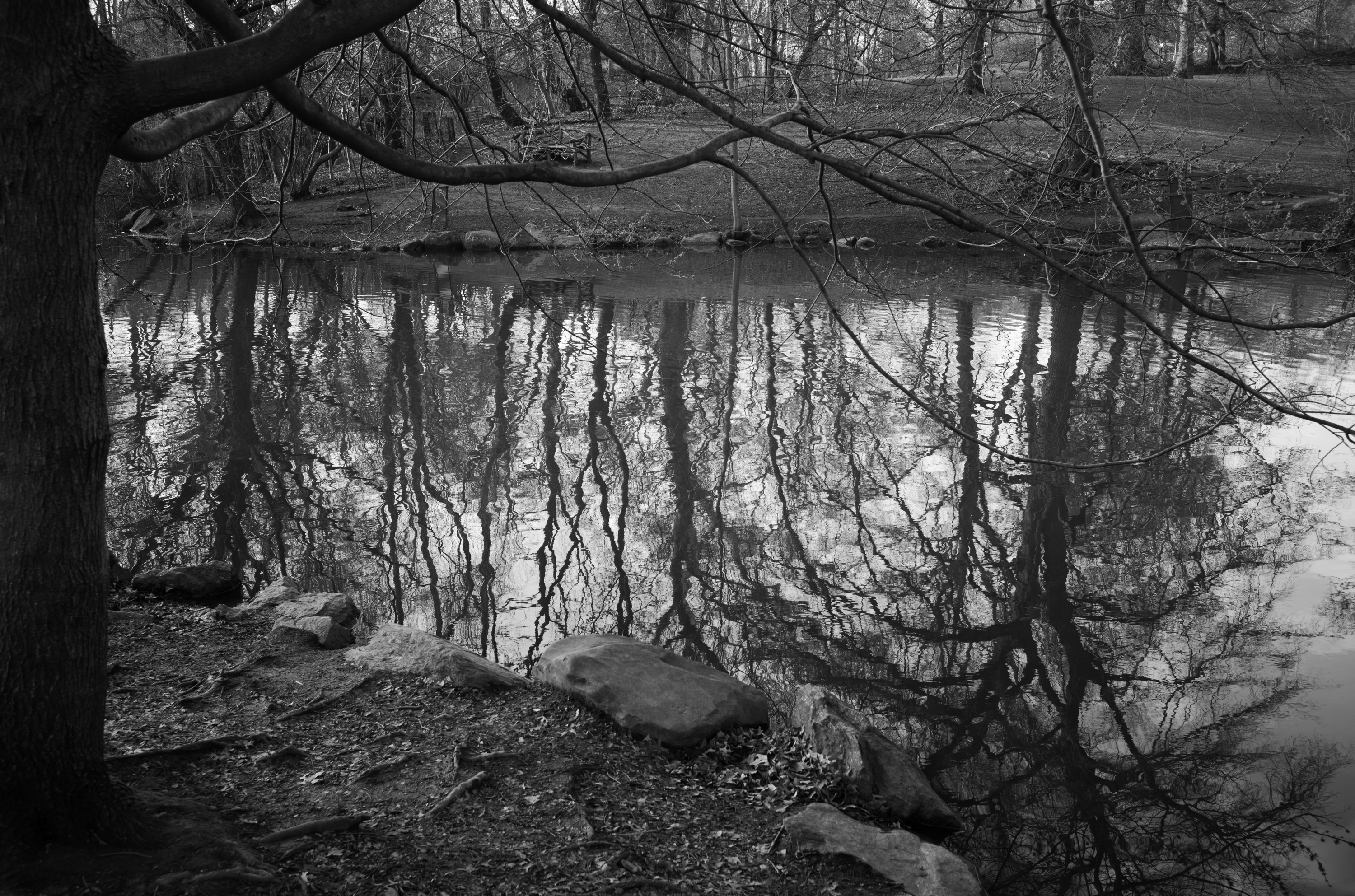












The Pool
In the northern part of Central Park, near Central Park West and West 100th Street, lies a small, secluded, pond-like body of water called “The Pool”.
Too small for boating and, perhaps, too shallow for fishing, it is a place for meditation, for reading, for lingering. The Pool’s seclusion is aided by its being well below street level and behind the walls along Central Park West. It lies at the foot of the steep paths leading up to The Great Hill, one of the highest natural points in Central Park. The water is enclosed, even protected by the setting. Ducks and other water birds shelter there in winter.
Several willow trees rise from the west end, the trails of their peculiar foliage hanging down into the water like tresses. The paths around are far enough away that it takes a bit of effort and care to get near the water’s edge. Ice ladders are installed during the winter months, a kind of warning to keep one’s distance. A few rustic benches are almost hidden among the trees and vines.
A natural pool suggests something impermanent--pools occur briefly when the water recedes, like the sea at low tide, or is captured briefly by a dip in the pavement when it rains--but this is a different kind of pool, originally fed by an old stream now long buried under the streets and buildings of the Upper West Side. At the east end, the water tumbles away over rocks and escapes under a rough stone arch on its way to the Harlem Meer.
The reflections in The Pool are disorienting: what is up and what is down, what is “real” and what is a reflection are not always apparent. The camera’s frame accentuates the uncertainty, the mystery. This winter setting is created by blacks and whites and shades of gray. The water is both subject and mirror, capturing the contrasts.
There is a stillness here–the quiet of winter.








.